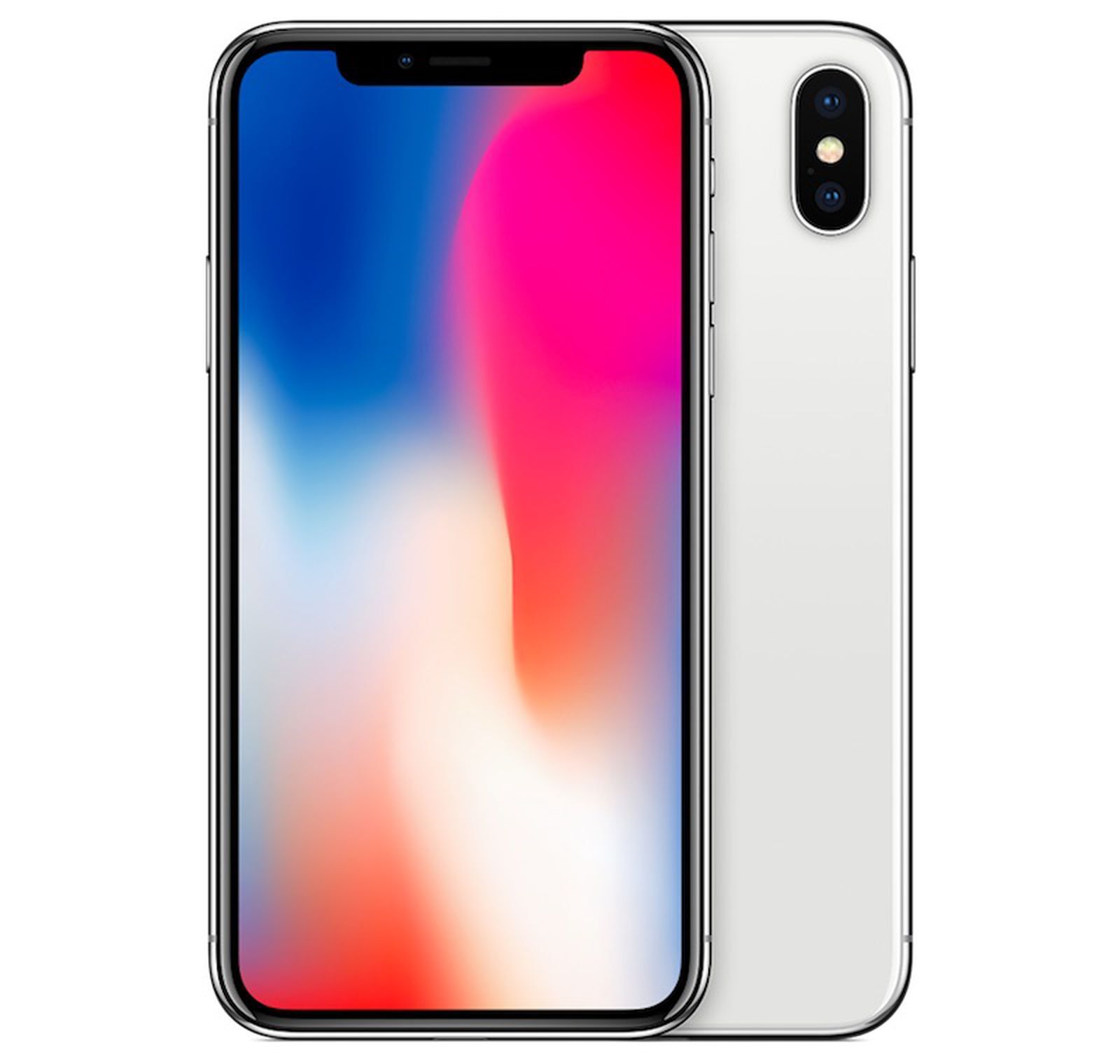The Rise of iPhone 10
The iPhone X, pronounced as "iPhone 10," marked a significant milestone in Apple's smartphone evolution. Launched in 2017, it was a departure from the traditional iPhone design, introducing a bezel-less display and Face ID technology. This revolutionary device showcased Apple's commitment to innovation and set a new standard for premium smartphones.
The iPhone X's design was a departure from its predecessors, featuring a stunning edge-to-edge Super Retina display that offered a more immersive viewing experience. The removal of the home button in favor of Face ID not only enhanced security but also streamlined the user experience. This bold move demonstrated Apple's willingness to challenge conventional norms and push the boundaries of technology.
Moreover, the iPhone X was powered by the A11 Bionic chip, which delivered unparalleled performance and efficiency. This chipset not only elevated the device's processing power but also laid the groundwork for future advancements in mobile computing. The integration of augmented reality capabilities further solidified the iPhone X's position as a trailblazer in the smartphone industry.
From a marketing perspective, the iPhone X represented a bold statement of Apple's commitment to excellence. The company's promotional efforts emphasized the device's cutting-edge features, such as Animoji, which showcased the device's advanced facial recognition capabilities in a fun and engaging manner. This approach not only captivated consumers but also reinforced Apple's reputation as an industry leader in innovation and design.
The iPhone X's impact extended beyond its technological advancements; it redefined consumer expectations for premium smartphones. Its sleek design, coupled with its advanced features, set a new benchmark for the industry, prompting competitors to reevaluate their product offerings and design strategies.
In essence, the rise of the iPhone X symbolized Apple's unwavering dedication to redefining the smartphone experience. By introducing groundbreaking features and pushing the boundaries of design and functionality, the iPhone X left an indelible mark on the industry, solidifying its status as a pivotal moment in Apple's product history.
Factors Leading to Discontinuation
The decision to discontinue the iPhone X stemmed from a confluence of factors that collectively influenced Apple's strategic direction. One pivotal consideration was the introduction of newer iPhone models, such as the iPhone XS and XR, which offered enhanced features and performance. These subsequent releases effectively superseded the iPhone X, making it less appealing from a competitive standpoint.
Furthermore, the production costs associated with the iPhone X's unique design and components played a significant role in its discontinuation. The device's innovative features, including the edge-to-edge display and Face ID technology, incurred higher manufacturing expenses, impacting its overall profitability. As Apple sought to streamline its product lineup and optimize manufacturing efficiency, the decision to discontinue the iPhone X became a logical step in aligning with these objectives.
Another contributing factor was the evolution of consumer preferences and market trends. As newer iPhone models entered the market, offering improved capabilities and design elements, consumer demand shifted towards these advanced offerings. This shift in consumer sentiment, coupled with the need to accommodate evolving market dynamics, influenced Apple's decision to phase out the iPhone X.
Additionally, the availability of refurbished iPhone X units and the growing inventory of pre-owned devices in the market contributed to the rationale behind discontinuing the model. With a robust secondary market for iPhones, Apple recognized the opportunity to cater to budget-conscious consumers while focusing on promoting its latest product offerings.
Moreover, the lifecycle of the iPhone X, in terms of technological relevance and software support, factored into the decision-making process. As newer iOS updates and features were optimized for the latest iPhone models, maintaining long-term support for the iPhone X became increasingly challenging. This consideration, alongside the imperative to prioritize resources for ongoing product development, underscored the rationale for discontinuing the iPhone X.
In essence, the convergence of competitive dynamics, production costs, consumer preferences, market trends, and product lifecycle considerations collectively influenced Apple's decision to discontinue the iPhone X. While the device's impact and legacy remain significant, the strategic imperatives guiding Apple's product portfolio necessitated this pivotal shift in the company's smartphone lineup.
Impact on iPhone 10 Users
The discontinuation of the iPhone X has reverberated across the user community, eliciting a spectrum of reactions and implications for existing and prospective users. As the device that epitomized Apple's foray into innovative design and cutting-edge technology, its departure from the market has left a discernible impact on its loyal user base.
For current iPhone X users, the discontinuation signals a shift in the device's long-term viability and support. While Apple remains committed to providing software updates and technical assistance for a certain period, the eventual phasing out of these services looms on the horizon. This reality prompts users to contemplate the future usability and compatibility of their beloved iPhone X, especially in the context of evolving software requirements and emerging technologies.
Furthermore, the discontinuation has implications for the resale and trade-in value of the iPhone X. As newer models take center stage, the perceived obsolescence of the iPhone X may influence its market value, potentially impacting users' ability to leverage their device for future upgrades or financial transactions. This shift in market dynamics underscores the pragmatic considerations that users must navigate in light of the iPhone X's discontinuation.
Moreover, the emotional attachment and affinity that users have developed for the iPhone X cannot be understated. The device represented a paradigm shift in smartphone design and functionality, fostering a deep sense of connection and pride among its user community. The discontinuation evokes a sense of nostalgia and reflection, prompting users to cherish their iPhone X as a symbol of an era defined by innovation and technological prowess.
On the flip side, prospective users may perceive the discontinuation as a catalyst for exploring alternative iPhone models. The absence of the iPhone X from Apple's official lineup may prompt individuals to consider newer iterations, such as the iPhone XS, XR, or the latest releases. This transition presents an opportunity for users to embrace the advancements and features offered by these subsequent models, potentially reshaping their smartphone preferences and experiences.
In essence, the impact of the iPhone X's discontinuation on its users transcends practical considerations, encompassing emotional attachment, market dynamics, and the broader narrative of technological progression. As users navigate this transition, they are poised to recalibrate their relationship with the iPhone ecosystem, embracing the evolution of Apple's product offerings while cherishing the legacy of the iconic iPhone X.
Apple's Strategy Moving Forward
Apple's strategic trajectory following the discontinuation of the iPhone X reflects a multifaceted approach aimed at leveraging innovation, market dynamics, and consumer engagement to propel its smartphone ecosystem into the future. Central to this strategy is the relentless pursuit of technological advancement and user-centric design, underpinned by a commitment to delivering unparalleled experiences to its global customer base.
At the forefront of Apple's strategy is the continued evolution of its iPhone lineup, characterized by a cadence of new releases that showcase iterative improvements and groundbreaking innovations. By introducing successive models that integrate cutting-edge features, enhanced performance, and refined aesthetics, Apple aims to captivate consumers and fortify its position as a vanguard of smartphone innovation. This iterative approach not only sustains consumer interest but also fosters a sense of anticipation and excitement surrounding each new iPhone iteration.
Furthermore, Apple's strategy encompasses a concerted focus on diversifying its product portfolio to cater to a spectrum of consumer preferences and market segments. This diversification is exemplified by the introduction of the iPhone SE, a compact yet powerful device that appeals to users seeking a more accessible entry point into the Apple ecosystem. By broadening its product range, Apple endeavors to expand its reach and resonate with a diverse array of consumers, thereby fortifying its market presence and relevance.
In tandem with product diversification, Apple's strategy emphasizes the seamless integration of hardware, software, and services to deliver a holistic and cohesive user experience. This integration is epitomized by the synergistic interplay between iOS updates, ecosystem-wide features such as iCloud and Apple Music, and the innovative capabilities of each iPhone model. By fostering a unified ecosystem that transcends individual devices, Apple cultivates user loyalty and engagement while amplifying the value proposition of its products.
Moreover, Apple's strategy encompasses a commitment to sustainability and environmental stewardship, exemplified by initiatives such as the transition to carbon-neutral manufacturing and the prioritization of recycled materials in product development. This conscientious approach not only resonates with environmentally conscious consumers but also underscores Apple's dedication to ethical practices and corporate responsibility, thereby enhancing its brand reputation and resonance.
In essence, Apple's strategy moving forward embodies a harmonious convergence of innovation, diversification, integration, and sustainability, all orchestrated to propel its smartphone ecosystem to new heights. By steadfastly adhering to these strategic imperatives, Apple is poised to chart a trajectory of sustained relevance, resonance, and impact in the dynamic landscape of the global smartphone industry.


